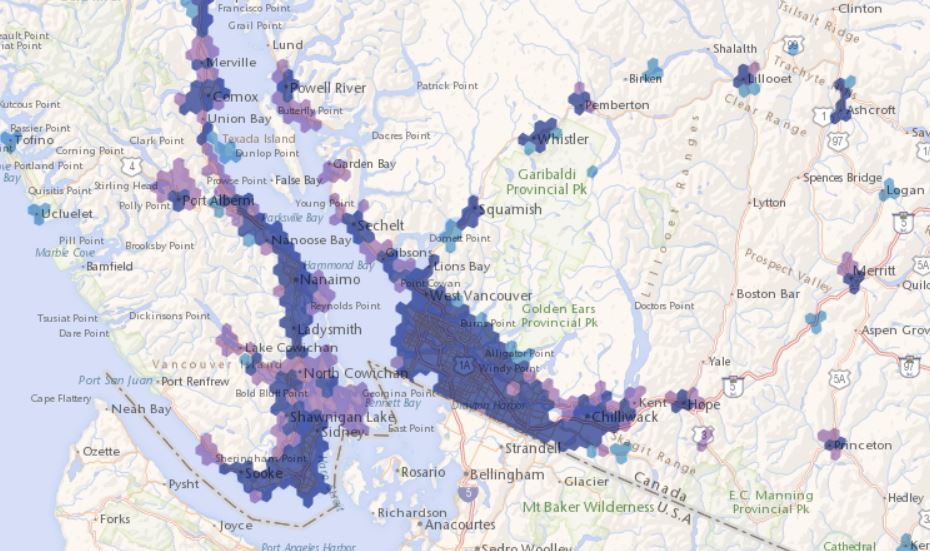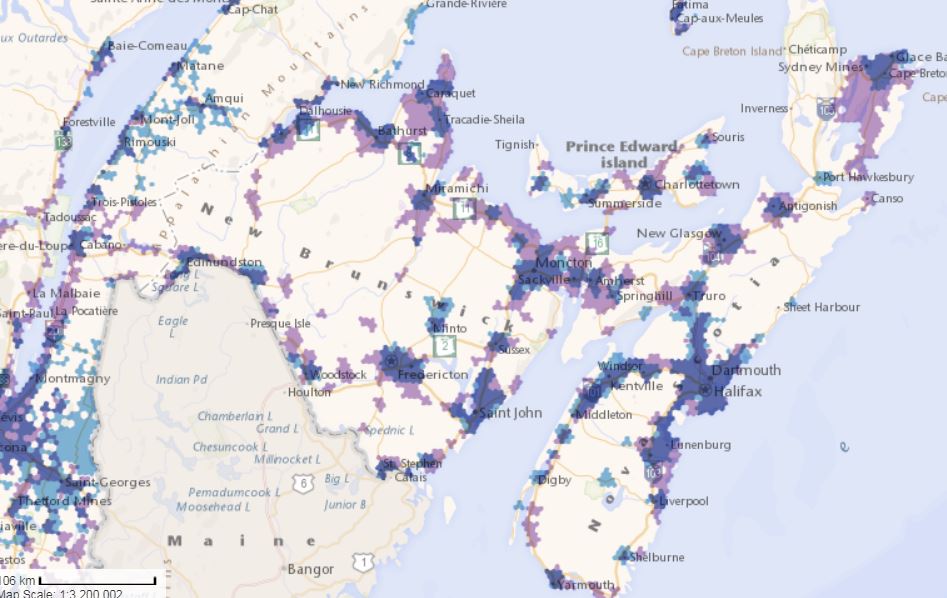Thousands of miles of internet cables zigzagging under coastal cities in the United States could be completely submerged underwater within the next 15 years, a team of researchers has found.

Cities like New York, Miami, Seattle and even coastal regions in Canada, could see rising sea levels destroy a network of cables and data centres that bolsters so much of modern life.
Scientists at the University of Oregan and the University of Wisconsin-Madison, presented their study last month in Montreal, saying climate change is causing sea levels to rise rapidly, which in turn can lead to widespread flooding and cause massive internet outages.
The most at-risk cities are those closest to sea level.
Sea levels are projected to rise by one foot in the next 15 years, according to the study. The researches predicted that more than 4,000 miles of buried fibre optic cables in the U.S. will be submerged in water by 2033. More than 1,000 data centres, which store servers and routers, could also be damaged.
WATCH: Canada’s melting Arctic ‘major contributor’ to rising sea levels

And the cables were not built to withstand that much water.
“All of this equipment is meant to be weather-resistant — but it’s not waterproof,” Paul Barford, University of Wisconsin-Madison professor of computer science and a co-author of the paper told Wired. Much of the system was put into place in the 1990s without much consideration of climate change, he said.
What about Canada?
Fibre optic cable technology is rapidly expanding in major cities across Canada, such as Toronto, Montreal and Vancouver, according to John Clague, professor of Earth Sciences at Simon Fraser University.
“Fibre optic cables transmit huge amounts of data very fast … it trumps cellphone tower technology as it’s more efficient. So a lot of companies are investing in this,” Clague explained.
“We have a reliance on fibre optics technology in Canada. We route them along roads and previous transportation routes, sometimes rail lines.”
And as the sea level continues to rise and storms become more severe, Canadian cities and the internet infrastructure are more prone to flooding.
“Vancouver would be the city most at risk of this type of interruption of internet service,” he said. “You have severe storms in Atlantic Canada and even in Toronto, but you don’t have as much property along shorelines in Halifax as you do in Vancouver. Fibre optic cables could be greatly exposed here.”
READ MORE: Canada in 2050, a land of climate-change extremes at current emissions levels
Clague agreed that rising sea level is a threat to Canada’s infrastructure, but said it may not be as quick as the researchers predicted.
“Rising a foot by 2030, those are extreme values and may be a bit alarmist,” Clague said. “It will probably play out over a longer period of time.”
What to do about it?
The researchers said the findings show that climate change presents a hazard to communications systems and “steps should be taken soon to develop plans to address this threat.”
But Clague said there may be a lot of pushback before companies replace the internet cables in vulnerable communities.
“To remove and replace these cables, it would be very costly,” he said.
- Life in the forest: How Stanley Park’s longest resident survived a changing landscape
- ‘Love at first sight’: Snow leopard at Toronto Zoo pregnant for 1st time
- Buzz kill? Gen Z less interested in coffee than older Canadians, survey shows
- Carbon rebate labelling in bank deposits fuelling confusion, minister says






Comments